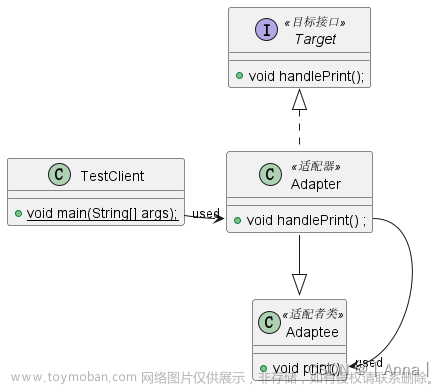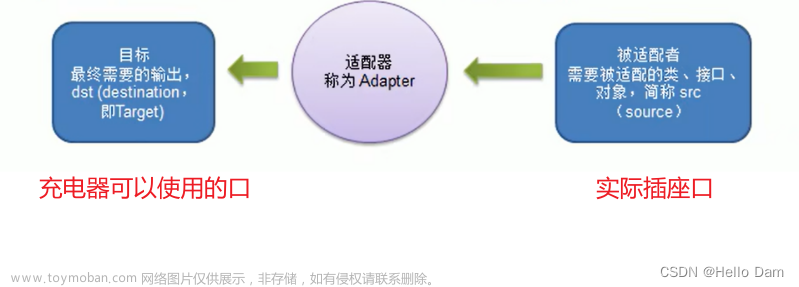Java中的适配器模式(Adapter Pattern)是一种设计模式,它允许我们将一种类的接口转换成另一种类的接口,以便于使用。适配器模式通常用于在不兼容的接口之间提供一种过渡性的接口,从而使代码更加灵活和可维护。
在Java中,适配器模式可以通过创建一个包装类来实现。这个包装类实现了源接口和目标接口,从而使得用户代码可以像使用目标接口一样使用源接口。适配器模式也可以被用来实现回调机制,通过适配器可以向其他对象传递一个参数或者实现一些额外的功能。
下面是一个简单的Java代码示例,演示了适配器模式的使用:文章来源:https://www.toymoban.com/news/detail-654263.html
// 定义源接口
interface SourceInterface {
void doSomething();
}
// 定义目标接口
interface TargetInterface {
void doSomethingElse();
}
// 实现源接口
class Source implements SourceInterface {
public void doSomething() {
System.out.println("Source.doSomething() is called.");
}
}
// 实现目标接口
class Target implements TargetInterface {
public void doSomethingElse() {
System.out.println("Target.doSomethingElse() is called.");
}
}
// 创建适配器类,实现源接口和目标接口
class Adapter implements SourceInterface, TargetInterface {
@Override
public void doSomething() {
System.out.println("Adapter.doSomething() is called.");
}
@Override
public void doSomethingElse() {
System.out.println("Adapter.doSomethingElse() is called.");
}
}
// 使用适配器类代替源接口和目标接口进行调用
public class Main {
public static void main(String[] args) {
Source source = new Source();
Target target = new Target();
Adapter adapter = new Adapter();
source.doSomething(); // 输出:Source.doSomething() is called.
target.doSomethingElse(); // 输出:Target.doSomethingElse() is called.
adapter.doSomething(); // 输出:Adapter.doSomething() is called.
adapter.doSomethingElse(); // 输出:Adapter.doSomethingElse() is called.
}
}
在上面的示例中,我们定义了两个接口:SourceInterface和TargetInterface。然后我们创建了一个实现SourceInterface的类Source和一个实现TargetInterface的类Target。接下来,我们创建了一个适配器类Adapter,它实现了SourceInterface和TargetInterface两个接口。最后,我们创建了一个Source对象、一个Target对象和一个Adapter对象,并分别调用了它们的doSomething()和doSomethingElse()方法。由于适配器类实现了源接口和目标接口,因此我们可以像使用目标接口一样使用源接口。文章来源地址https://www.toymoban.com/news/detail-654263.html
到了这里,关于什么是Java中的适配器模式?的文章就介绍完了。如果您还想了解更多内容,请在右上角搜索TOY模板网以前的文章或继续浏览下面的相关文章,希望大家以后多多支持TOY模板网!











